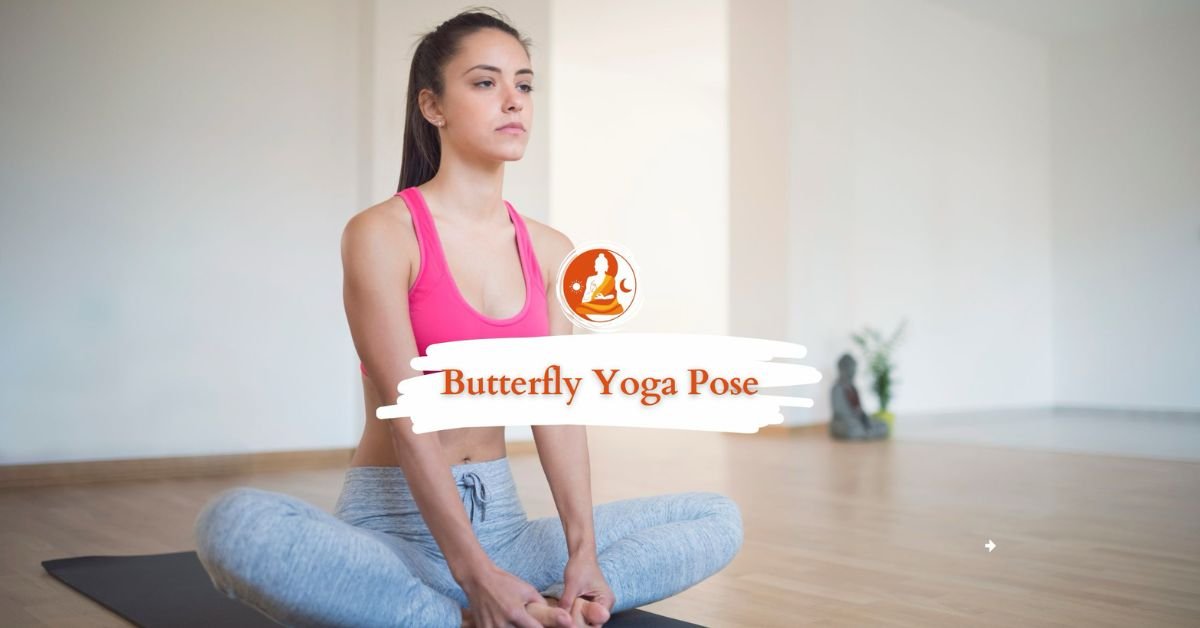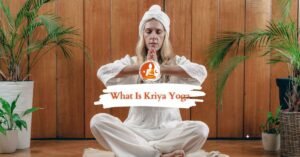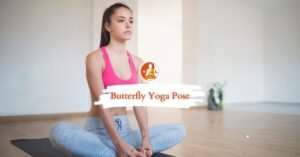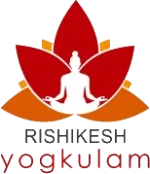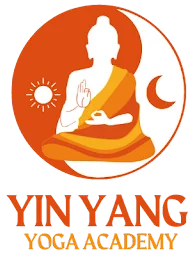The butterfly yoga pose, also known as Baddha Konasana or Bound Angle pose, is a basic asana that combines elegance, flexibility, and several health advantages. This page tries to give a detailed reference to the butterfly pose, studying its history, advantages, appropriate technique, and variants. Whether you are a novice or an experienced yogi, grasping the complexities of this position may dramatically boost your practice and general well being.
Join us as we explore into the realm of the butterfly yoga pose, unlocking its potential to increase flexibility, induce calm, and support your physical and mental health. From its ancient origins to current uses, we will cover all you need to know to grasp this vital posture and apply it successfully into your yoga practice.
Table of Contents
ToggleThe Origins and Significance of the Butterfly Pose
The butterfly pose is centuries old in yoga. Baddha Konasana means Bound Angle Pose, alluding to the legs curvature. This asana is related to Svadhisthana, the second chakra, which governs creativity, emotions, and sexuality.
Many yoga programs include butterfly position to prepare for advanced sitting and forward bends. This mild yet effective stretch of the inner thighs and groin makes it a great lower body warm up.
The posture is called Butterfly, because the legs move like butterfly wings going up and down. This visual makes the stance more accessible and memorable and matches the movement lightness and elegance.
Different civilizations have practiced butterfly position in different ways. Traditional Indian yoga has utilized it for ages as a contemplative position and hip flexibility improver. Some martial arts employ similar stances to increase agility and lower body strength.
Butterfly posture yoga is said to expand the body and mind as well as exercise. Yoga believes the hips store emotions and tension. Open hips in positions like the Butterfly are said to release pent up emotions and alleviate tension.
Benefits of Butterfly Pose
Butterfly poses are a great complement to any yoga regimen since they have many physical and mental advantages. Benefits of butterfly pose include:
- Increases flexibility: Regular butterfly pose practice increases inner thigh, groin, and hip flexibility. This increased flexibility helps other yoga positions and daily activities.
- Better posture: Butterfly position improves posture by expanding the hips and strengthening the spine.
- Stress relief: This soft, sitting stance relaxes and reduces anxiety.
- Digestive health: This pose gentle lower abdominal compression may aid digestion and relieve digestive distress.
- Menstrual discomfort relief: Butterfly posture relieves menstruation cramps for many people.
- Pregnancy preparation: The position opens the pelvis and improves hip flexibility, preparing the body for delivery.
- Improved circulation: This posture improves lower body and pelvic blood flow by placing the legs.
- Grounding and centering: Butterfly stance is a great sitting pose for meditation or breathwork because it grounds and centers you.
- Pelvic floor strength: This position gently engages the pelvic floor muscles, improving tone and function.
- Knee and ankle health: The Butterfly posture helps increase knee and ankle flexibility, minimizing injury risk.
- Emotional release: Hip opening positions like the Butterfly are said to release emotions and alleviate tension.
- Improved focus: This position requires attention to maintain good form, which helps increase mental focus.
Butterfly posture adds versatility and value to any yoga practice, regardless of expertise or fitness objectives.
How to do Butterfly Pose?
Mastering the butterfly posture takes precision and alignment. How to do butterfly pose properly using following steps:
- Sat on your yoga mat with legs outstretched in front of you.
- Your knees should fall out to the sides as you bend and bring your feet together.
- Bring your heels as near to your pelvis as possible. Your feet should have diamond shaped edges.
- Keep your back straight and shoulders relaxed while grabbing your feet or ankles.
- Press your knees to the floor with your elbows. Avoid force—let gravity move this.
- Stabilize your sitting bones on the mat.
- Keep your spine long, visualizing your head touching the ceiling.
- Relax your jaw and facial muscles to relieve facial stress.
- Inhale and exhale slowly and deeply through your nose.
- Hold this posture for 1–5 minutes, breathing deeply and evenly.
- Relax and gently straighten your legs to release.
Butterfly Pose Variations
Butterfly posture is adaptable to diverse flexibility levels and demands. Explore these:
- Supported Butterfly: Support each knee with a folded blanket or yoga block. This variant is great for beginners and tight hips. It lets you relax deeper into the position without straining hips or knees.
- Reclining Butterfly: Put your feet together and knees out to the sides on your back. This variant more restful and longer lasting. For lower back pain or a more relaxing stance, it is helpful.
- Forward Fold Butterfly: From the fundamental stance, progressively fold forward, hands to feet. This increases inner thigh and lower back stretch. Fold forward with a straight spine and just as far as comfortable.
- Wall Butterfly: The Wall Butterfly stance is done with your back against a wall and your spine supported. This helps back sufferers stay aligned and comfortable. It is also a good technique to examine your posing posture.
- Dynamic Butterfly: Flap your legs like butterfly wings. This version warms the hips and increases blood flow. It is a terrific method to start posture exercises, particularly if you are stiff.
- Bound Butterfly: Reach your arms behind your back and clasp your hands if you have greater flexibility. The position gains upper body stretch.
- Butterfly with Forward Bend: Walk your hands out in front of you on the floor instead of folding forward. This alters hip and lower back feeling.
- One Legged Butterfly: Keep one leg in the butterfly posture and extend the other. This asymmetrical position balances hip imbalances.
- Butterfly Against the Wall: Lie on your back with your buttocks against a wall and your legs above it. This restful variant lets gravity open your hips.
- Butterfly Twist: Sit butterfly style with one hand on the floor behind you and the other on the opposite knee. Look over your back shoulder and gently rotate your body. This gives butterflies a spinal twist while expanding their hips.
These variants let you tailor the stance to your body and flexibility. Listen to your body and select the variant that feels best for you that day. You may discover that various varieties fit you at different times as you practice.
The Butterfly with Legs Variation
Butterfly with legs is a small variant of the Butterfly stance that offers advantages and difficulties. How to do this variation:
- Begin Butterfly posture with your feet together.
- Make a diamond shape with your legs by sliding your feet forward slightly from your groin.
- Keep your back straight and softly push your knees to the floor.
- Lean forward with a straight back if comfortable.
- Take 30–60 seconds to hold this posture, inhaling deeply.
This version may stretch the inner thighs and groin further, making it a good transition from Butterfly posture. With extra space between your feet and hips, your adductor muscles stretch harder.
Benefits of this variant include:
- Improved inner thigh and groin flexibility
- Improved hip mobility
- Increased lower back stretching while bending forward
- Increased core muscle involvement for balance
Like any yoga posture, listen to your body and do not overdo it. If you feel any pain or excessive discomfort, especially in your knees or hips, return to the basic Butterfly pose or come out of the pose entirely.
This variant may be simplified using props:
- Support your knees using yoga blocks.
- Sat on a folded blanket to raise your hips.
- If your feet tend to separate, use a strap.
Remember, the goal is not to force your knees to the ground, but to find a comfortable stretch that you can maintain with steady breathing. With regular practice, you may find that your flexibility increases, allowing you to bring your feet further away from your body while still maintaining the pose comfortably.
Butterfly Position for Certain Occurrences
Although the butterfly stance is usually useful and safe, there are situations in which it may need modification. Here are several ways to modify the stance for different scenarios:
- Pregnancy: As a way to expand the hips and get ready to give birth, the butterfly stance might be helpful for pregnant women. Be cautious not to do forward folds while you are more along in your pregnancy. If you are having trouble sitting up straight, try using a folded blanket or several cushions beneath your knees.
- Knee injuries: Injury to the knee? To alleviate pressure on the knees, put a support beneath your outer thighs. Yoga blocks or folded blankets may be used. Keep your knees slightly bent and your concentration on a little stretch.
- Lower back pain: To ease strain on the lower back, consider the reclined version or lean against a wall. Be sure your pelvis is not twisted forward or backward; it should be in a neutral posture.
- Hip problems: Exercise with care and make extensive use of supports if you have hip difficulties. For extra stability, try putting some yoga blocks beneath your knees. Talk to a doctor or yoga instructor for specific recommendations if you are dealing with a hip injury or persistent health issue.
- Groin injuries: If you have a groin injury, you should either not do this posture or do a very mild version with plenty of props until you are completely recovered. Follow your body cues and rest if discomfort strikes at any time.
- Sciatica: When you are experiencing sciatica, you may find that the Butterfly stance helps, but it is also possible that it may make your condition worse. If you are experiencing sciatic discomfort, it is best to start with a light version and use plenty of props.
- Arthritis: If you suffer from knee or hip arthritis, it is important to utilize leg supports to alleviate pressure on the affected joints. Perhaps you wpu;d feel more at ease with the reclining butterfly version.
- Pelvic floor disorders: Although the Butterfly posture has several health benefits for the pelvic floor, those who suffer from certain pelvic floor problems should exercise care when practicing it. Before you add this stance to your regimen, see a pelvic floor expert.
- Elderly practitioners: Sitting on a chair allows those with mobility issues or elderly to perform a modified version of the posture. While sitting, just bring the soles of your feet together.
- Tight hips: If your hips are really tight, you should not try to expand them too forcefully. Avoid slouching by placing a cushion beneath each knee and concentrating on keeping your back straight.
Butterfly Pose in Yoga Sequences
Butterfly pose fits into many yoga routines. Some tips for integrating it:
- Warm up: Start your practice with the Butterfly posture to gently expand the hips and prepare for more intensive poses. Warm up your muscles with the active butterfly version before settling into the static stance.
- Between more challenging poses: Butterfly position may rest between harder asanas. You may breathe and regroup before going on to the next difficult stance.
- Cool down: Include the position in your cool down routine to relax and enter ultimate relaxation. For this, the reclining butterfly is ideal.
- Meditation preparation: Ground yourself and relax your thoughts using Butterfly posture before meditation. The pose sitting aspect gives it a good segue into meditation.
- As part of a hip opening sequence: For a targeted hip opening exercise, combine Butterfly posture with Pigeon pose or Low Lunge. Those who sit a lot throughout the day may benefit from this.
- Restorative yoga: Support a long held Butterfly posture using props. This is soothing and healing.
- As a standalone practice: Butterfly posture is beneficial even for a few minutes if you are short on time. A excellent stance to take while watching TV or reading, it is simple to adopt into everyday life.
- In a core strengthening sequence: Core workouts might begin with the Butterfly posture. To activate your core, elevate your feet off the ground with your knees apart.
- As part of a balance practice: Butterfly involves numerous stabilizing muscles to maintain perfect alignment, making it a balancing practice. It might prepare you for harder balancing positions.
- As part of a mindfulness program: Butterfly position is good for mindfulness. Hold the stance and feel your hips, legs, and back.
To really benefit from the posture, hold it for a few breaths. Increase the time as you become used to the stance. Listen to your body and alter or leave the posture if you feel pain.
Bottom Lines
Butterfly yoga pose is an essential asana with many physical and emotional advantages. This position enhances yoga by enhancing flexibility, posture, relaxation, and well being. Butterfly posture may improve your yoga practice and everyday life if you master its right technique, modifications, and uses.
We have examined this pose history, anatomy, and advantages. We covered proper form, typical faults, and adjustments for diverse requirements and abilities. We also covered how to integrate the Butterfly pose into yoga and meditation and customize it for different scenarios.
We have seen how the Butterfly posture may be used in everyday life via the butterfly sitting position and as a single fitness workout outside of yoga. This adaptability makes the position useful for yogis and anybody trying to better their health.
Consistent practice yields the greatest outcomes. Start where you are, utilize props, and progressively expand your practice. Listen to your body, accept its boundaries, and enjoy little gains.
Spread your yoga mat, sit in Butterfly position, and let your practice soar. Butterfly posture may help you center and expand your body and mind, whether you are using it in yoga, meditation, or as a fast stretch at work.
Common Asked Questions!
A: Begin with 30 to 60 seconds for newcomers. Gradually raise the time to three to five minutes or more as you start to feel more at peace.
A: Although yoga is usually safe for most people, individuals who have hurt their knees, hips, or groins should be careful and maybe even see a doctor or a yoga instructor for advice.
A: The butterfly position in yoga, also known as Baddha Konasana, is a seated pose where you bring the soles of your feet together, allowing your knees to fall out to the sides, creating a diamond shape with your legs.
A: To do the butterfly pose, sit on the floor, bring the soles of your feet together, hold your feet or ankles, sit up tall, and gently press your knees towards the floor. Remember to breathe deeply and hold the pose for 30 seconds to several minutes.
A: The butterfly exercise offers numerous benefits, including improved hip flexibility, better posture, stress relief, and potential relief from menstrual discomfort. It is also great for stretching the inner thighs and groin muscles.

